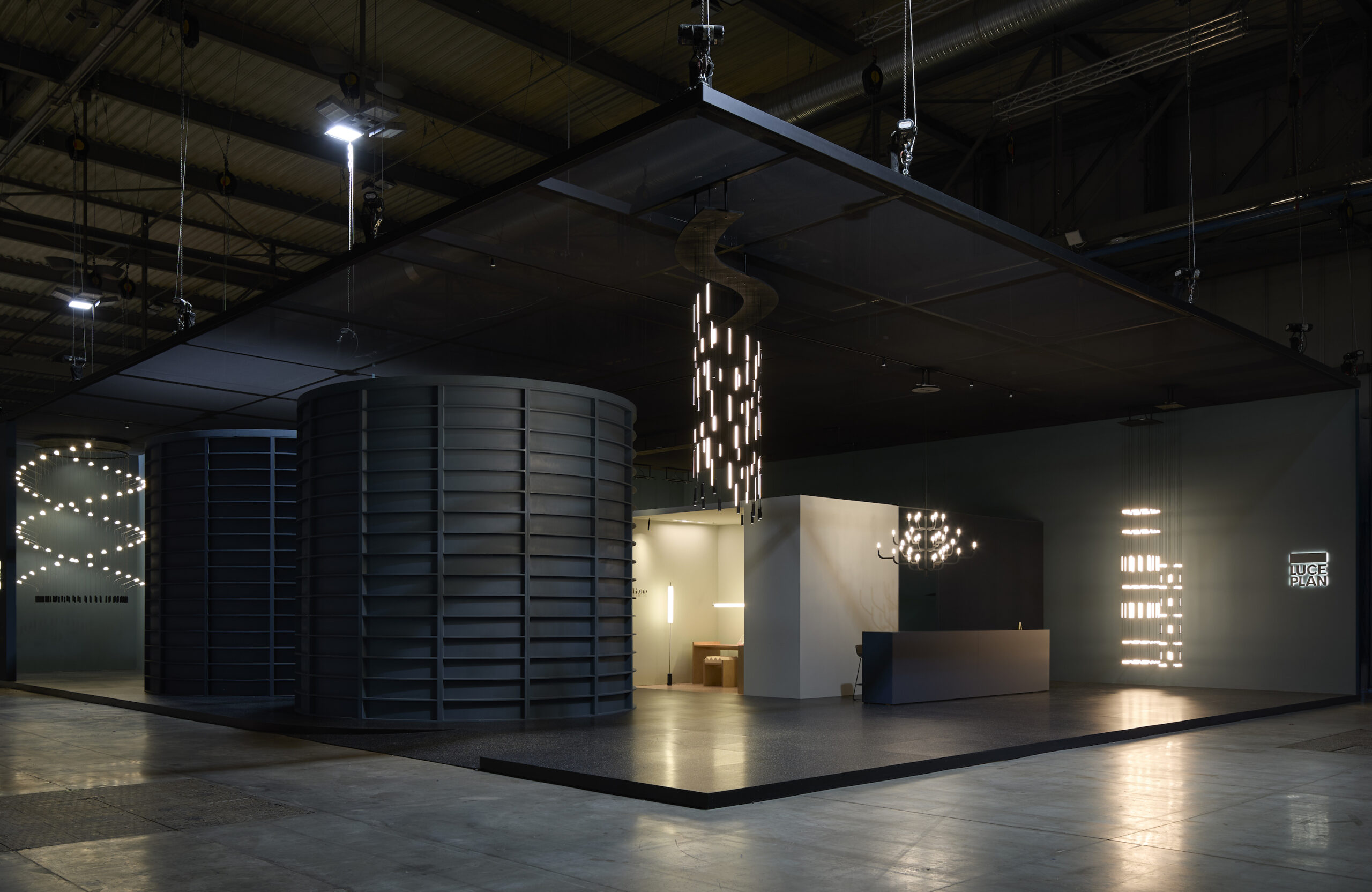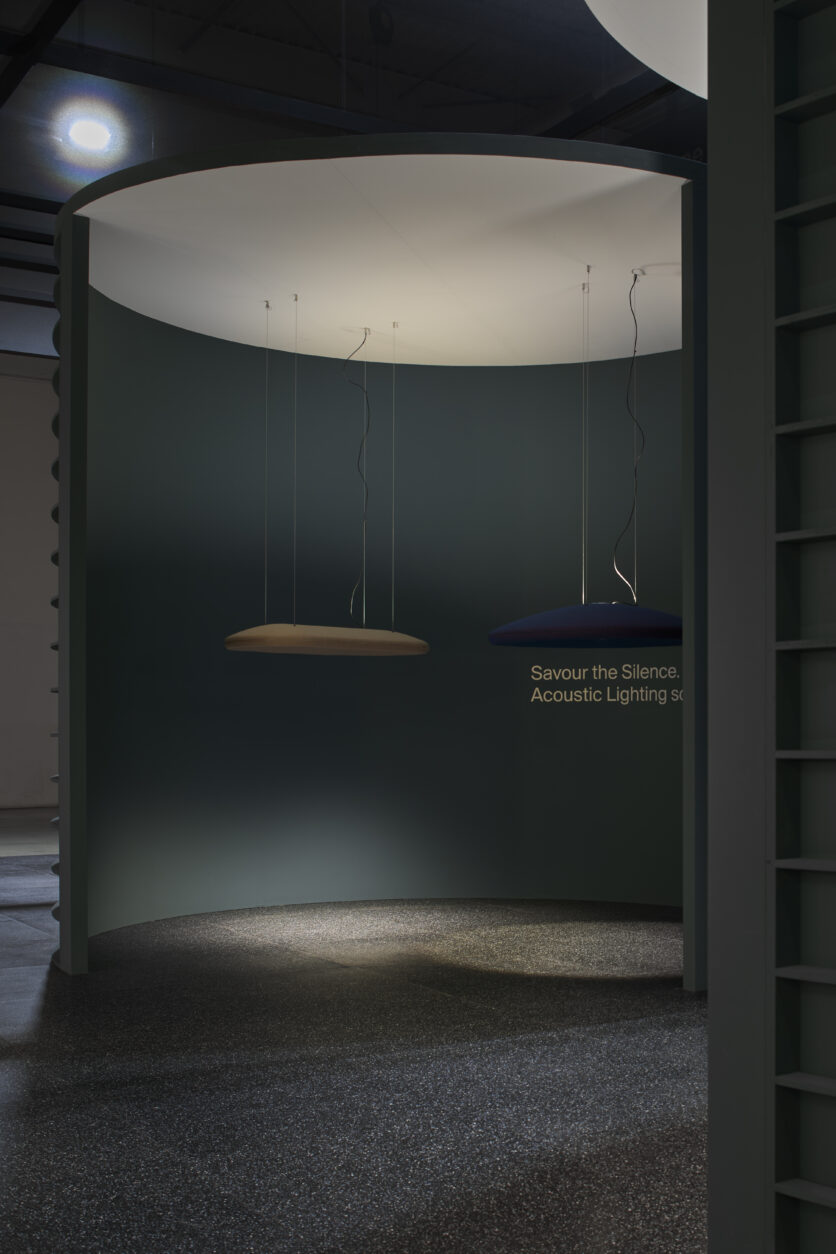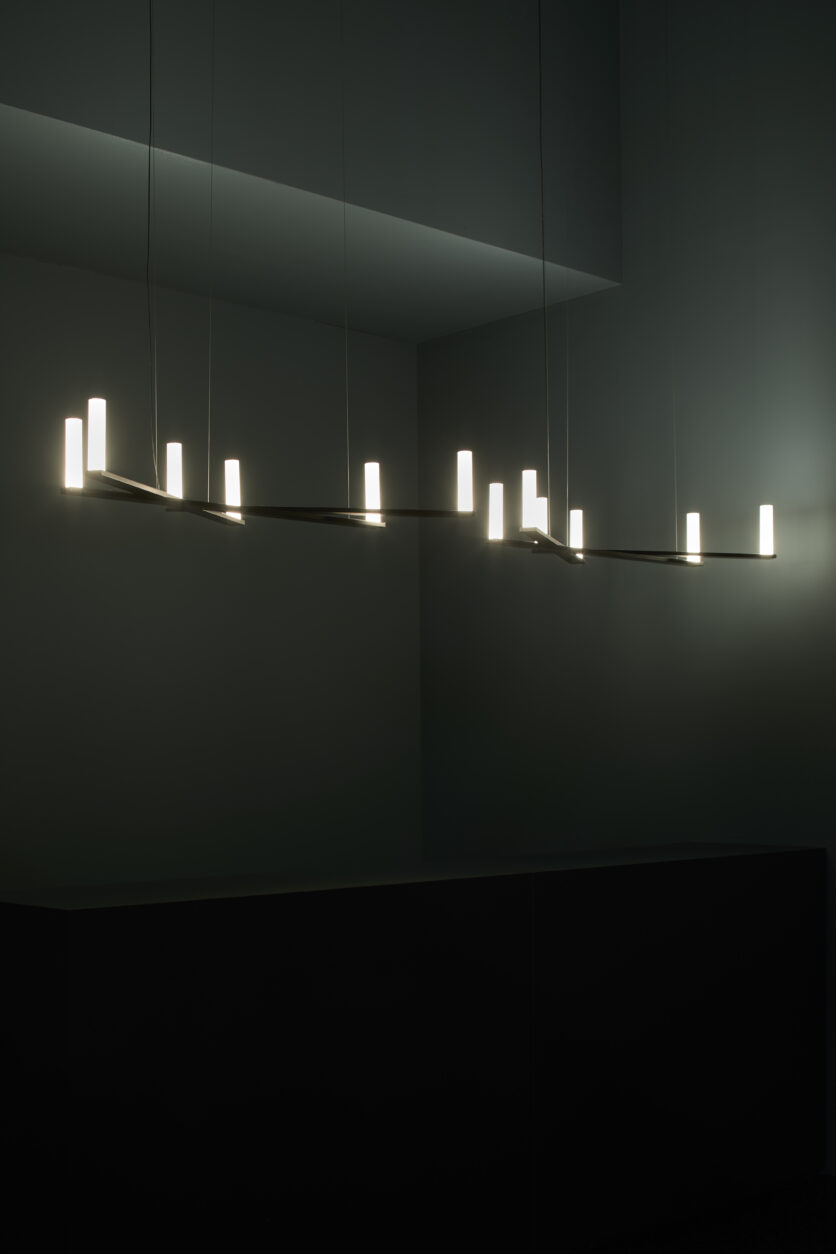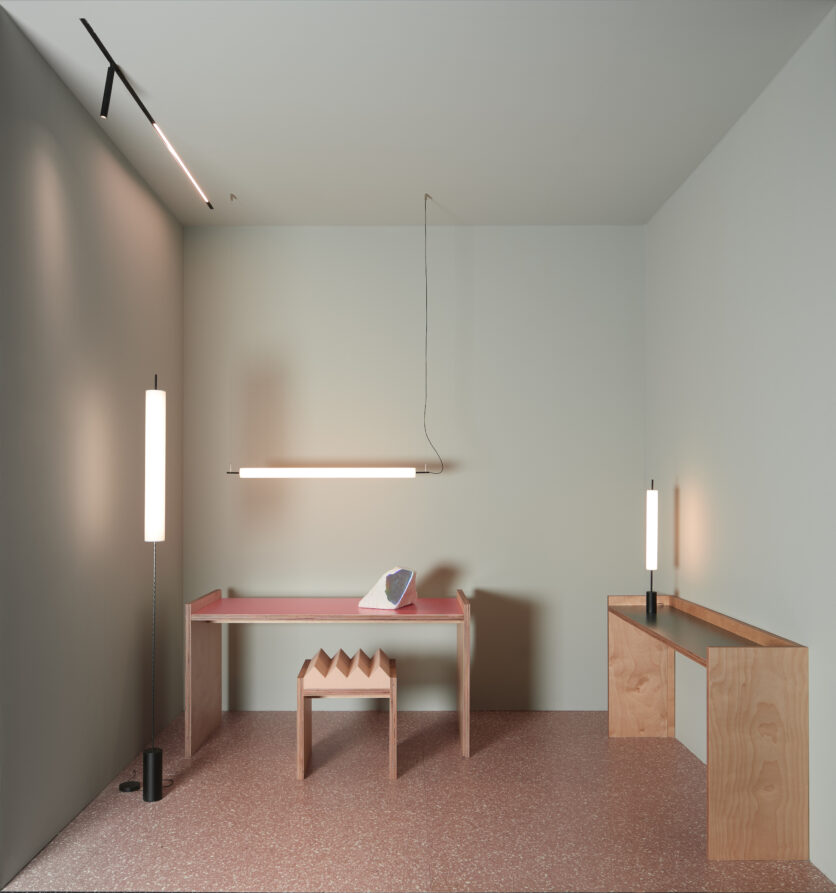Luceplan returns to illuminate the panorama of international design with a dual, strategic presence during Milan Design Week: on the one hand Euroluce, inside the Salone del Mobile, and on the other the Flagship Store in Corso Monforte, a reference point for designers, clients and enthusiasts. A choice that reflects the dual nature of the company, which is deeply rooted in experimentation and technological innovation, but at the same time open, accessible, and devoted to relations and dialogue with the public.
The stand at Euroluce offers an immersive tale, a design experience that involves the senses and invites visitors to explore the Luceplan world through matter, form and, of course, light. Designed as a full-colour container, the space welcomes visitors in a vibrant and multifaceted atmosphere, where the new products are presented in single and combined configurations, testifying to the modular and flexible nature of each system.
The 2025 novelties represent a journey through different design languages, united however by a common vision: that of a light that is not only function, but also expression, atmosphere, relationship. The new Hono suspension lamps by Studio Mandalaki combine rigour and lightness; Markis by Daniel Rybakken proposes a fascinating balance between technical structure and textile delicacy; Dix Bougies petit by Studio Odile Decq reinterprets light in a theatrical and sculptural key. Liiu by VANTOT is a celebration of lightness and movement, while Dansì and Limetry by Alessandro Zambelli offer new ways of interacting between light and space, gesture and meaning.
At the centre of the stand, dominating the scene, is the imposing J-us XL: a chandelier with 36 light points and a diameter of 120 cm, signed by Alessandro Zambelli, which stands as a light installation with a strong visual impact, a symbol of Luceplan’s ability to combine technical research and aesthetic strength. Among the most surprising proposals, Posi by Umut Yamac marks the beginning of a new collaboration: a table lamp inspired by the Japanese art of Ikebana, in which luminous stems are freely inserted into a base, giving life to personal, delicate and poetic compositions. Also available in a rechargeable portable version, Posi invites to a simple and natural gesture, that of ‘laying’ the light, choosing shape, intensity and direction.
Luceplan experiments not only with light but also with sound, renewing its commitment to acoustics with Hinpan, a sound-absorbing suspension lamp designed by Mandalaki. A full and soft volume in polyurethane foam, wrapped in a technical fabric and crossed by diffused light, capable of creating a muffled and comfortable atmosphere. An object that blends technology and sensoriality, and that responds to the increasingly urgent need for acoustic comfort in contemporary spaces.
The entire stand layout is divided into themed sections that enhance the identity of the different product families. Some of the most iconic systems – such as Alibel and Flia by Zambelli, Koinè and Hono by Mandalaki, Lita by David Dolcini and DOI by Meneghello Paolelli – are presented within the Luceplan track system, thus revisited in a decorative key. A concrete example of how each element can dialogue with the others, composing itself in an organic structure, flexible and rich in installation possibilities.
The narrative of Luceplan does not end at the fair: the Flagship Store in Corso Monforte also welcomes the new collections in a renovated setting, designed to offer a more intimate and everyday experience of light. Here, the products live in a context closer to reality, where the architecture of domestic and professional space meets the functional beauty of lighting. It is an invitation to touch, observe, interact, imagine.
Once again, Luceplan stands out for its ability to anticipate contemporary needs, proposing lighting solutions that do not merely resolve a function, but enrich it with meaning, emotion and beauty. A collection that tells of a light that furnishes, that welcomes, that listens. A light designed for man, at the service of design, capable of fitting into any context with discretion and character. A light that evolves, but that never loses its original objective, to develop spaces where people and their well-being are at the centre.











